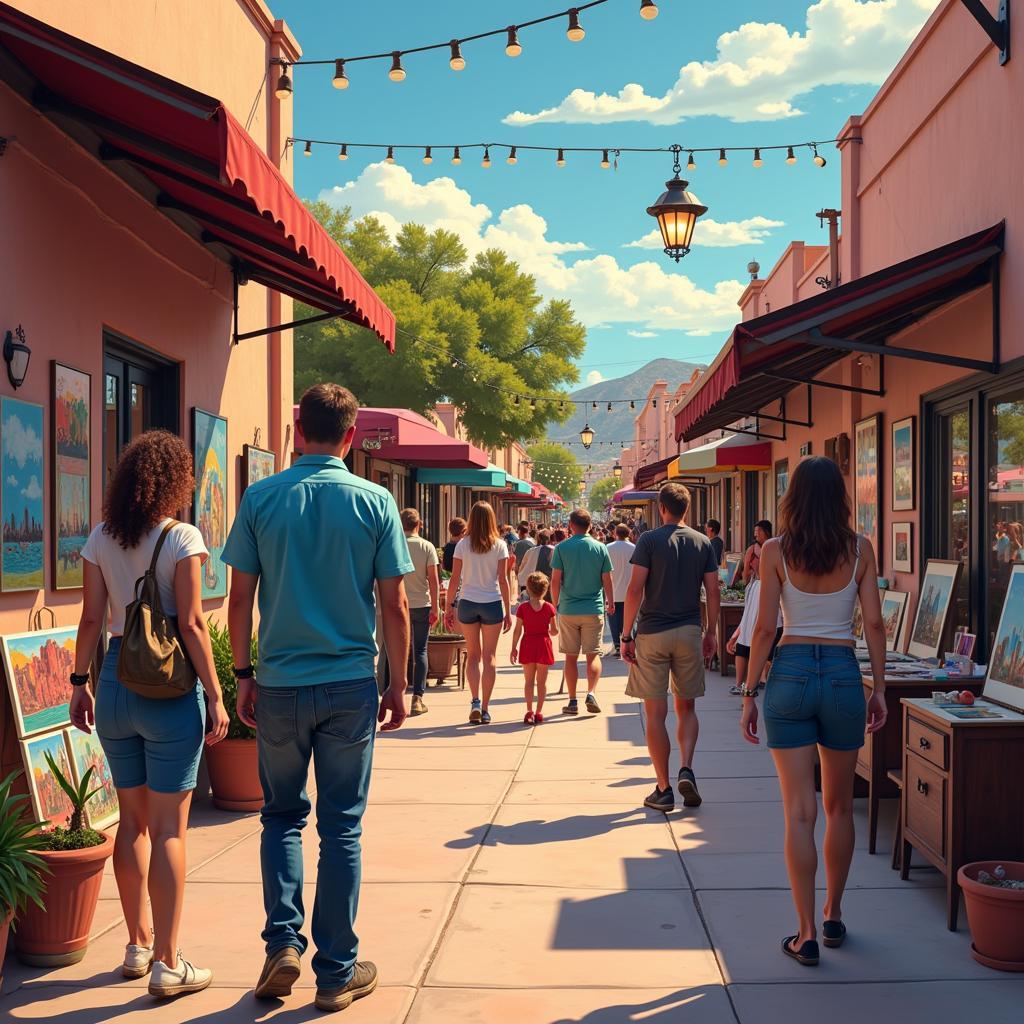The Art of Teasing: Unveiling the Allure of Subtlety in Digital Art
Teasing Art, in its digital form, is a powerful technique that captivates viewers and leaves them wanting more. It’s about creating a sense of mystery, sparking curiosity, and subtly revealing the essence of your artwork without giving everything away at once. From partially obscured figures to suggestive color palettes, the art of teasing allows artists to engage their audience on a deeper level, inviting them to participate in the creative process by filling in the blanks and constructing their own interpretations.
What is Teasing Art?
Teasing art involves strategically concealing and revealing elements of a piece to create intrigue. Think of it as a visual whisper, a subtle hint that sparks the viewer’s imagination. This technique can be applied to various digital art forms, from illustrations and animations to 3D models and interactive installations. The core principle lies in striking a balance between revealing just enough to pique interest and holding back enough to maintain an aura of mystery.
The Power of Suggestion
Why is teasing art so effective? It taps into our innate curiosity. We are naturally drawn to the unknown, the partially hidden, and the implied. By leaving some aspects of the artwork open to interpretation, artists empower viewers to become active participants in the creative process. They are invited to complete the story, decipher the meaning, and connect with the piece on a more personal level. This interactive element elevates the viewing experience from passive observation to active engagement.
Techniques for Teasing in Digital Art
Several techniques can be employed to create teasing art in the digital realm. Using light and shadow to partially conceal figures or objects is a classic approach. Another method involves strategically cropping the image, leaving key elements outside the frame. Playing with color and texture can also be effective, creating a sense of depth and mystery. Abstract elements can be incorporated to further enhance the ambiguity and invite viewers to explore the artwork’s hidden layers.
Harnessing the Power of Teasing: Tips and Tricks
Creating compelling teasing art requires careful planning and execution. Consider the following tips to effectively incorporate this technique into your digital creations:
- Know your audience: Understand their interests and preferences to tailor your teasing tactics.
- Start with a strong concept: A clear vision will guide your choices and ensure a cohesive final product.
- Experiment with different techniques: Play with light, shadow, composition, and color to find what works best for your style and subject matter.
- Seek feedback: Get input from fellow artists or your target audience to gauge the effectiveness of your teasing techniques.
Finding the Sweet Spot: Balancing Revelation and Concealment
The key to successful teasing art lies in finding the right balance between revealing and concealing. Too much revelation, and the mystery is lost. Too much concealment, and the viewer may become frustrated or disengaged. The goal is to create a delicate tension, a sense of anticipation that keeps the viewer captivated and eager to discover more.
Teasing Art and Emotional Impact
Teasing art has a unique ability to evoke strong emotions in viewers. The sense of mystery and anticipation can create feelings of intrigue, curiosity, and even a touch of suspense. By carefully crafting the visual narrative, artists can guide the viewer through a range of emotions, leading to a more immersive and memorable experience. “Teasing art is not about withholding information, but about strategically releasing it to create a powerful emotional journey for the viewer,” explains renowned digital artist, Anya Sharma. “It’s about building anticipation and allowing the audience to participate in the unraveling of the story.”
Beyond the Visual: Teasing in Interactive Art
The digital realm offers unique opportunities to extend the concept of teasing beyond purely visual elements. In interactive art installations, for instance, artists can use sensors and other technologies to respond to the viewer’s presence, revealing or concealing elements based on their actions. This dynamic interplay creates a heightened sense of engagement and allows for a personalized and ever-evolving experience.
Conclusion
Teasing art, with its delicate balance of revelation and concealment, is a powerful tool for digital artists. By mastering this technique, artists can elevate their work, captivating viewers and inviting them to embark on a journey of discovery. So, embrace the allure of subtlety and unleash the power of teasing in your digital creations.
FAQ
- What is the main goal of teasing art? To pique the viewer’s curiosity and encourage active engagement.
- How can I use teasing in my digital illustrations? Try partially obscuring figures with shadows or strategically cropping the image.
- What is the key to effective teasing art? Finding the right balance between revealing and concealing elements.
- How does teasing art impact viewers emotionally? It can evoke feelings of intrigue, curiosity, and suspense.
- How can technology enhance teasing in interactive art? Sensors and other technologies can respond to the viewer’s actions, creating a dynamic and personalized experience.
- How does teasing art relate to colorful and fuzzy street art crossword? It enhances the viewer’s experience similar to how a crossword puzzle does, through engagement and discovery.
- Where can I learn more about teasing art techniques? Check out our article on colorful and fuzzy street art crossword for inspiration on visual engagement.
Need help with your teasing art journey? Contact us at Phone Number: 02462573573, Email: [email protected] Or visit us at Savico Megamall, 7-9 Đ. Nguyễn Văn Linh, Gia Thụy, Long Biên, Hà Nội 10000, Việt Nam. We have a 24/7 customer support team.



